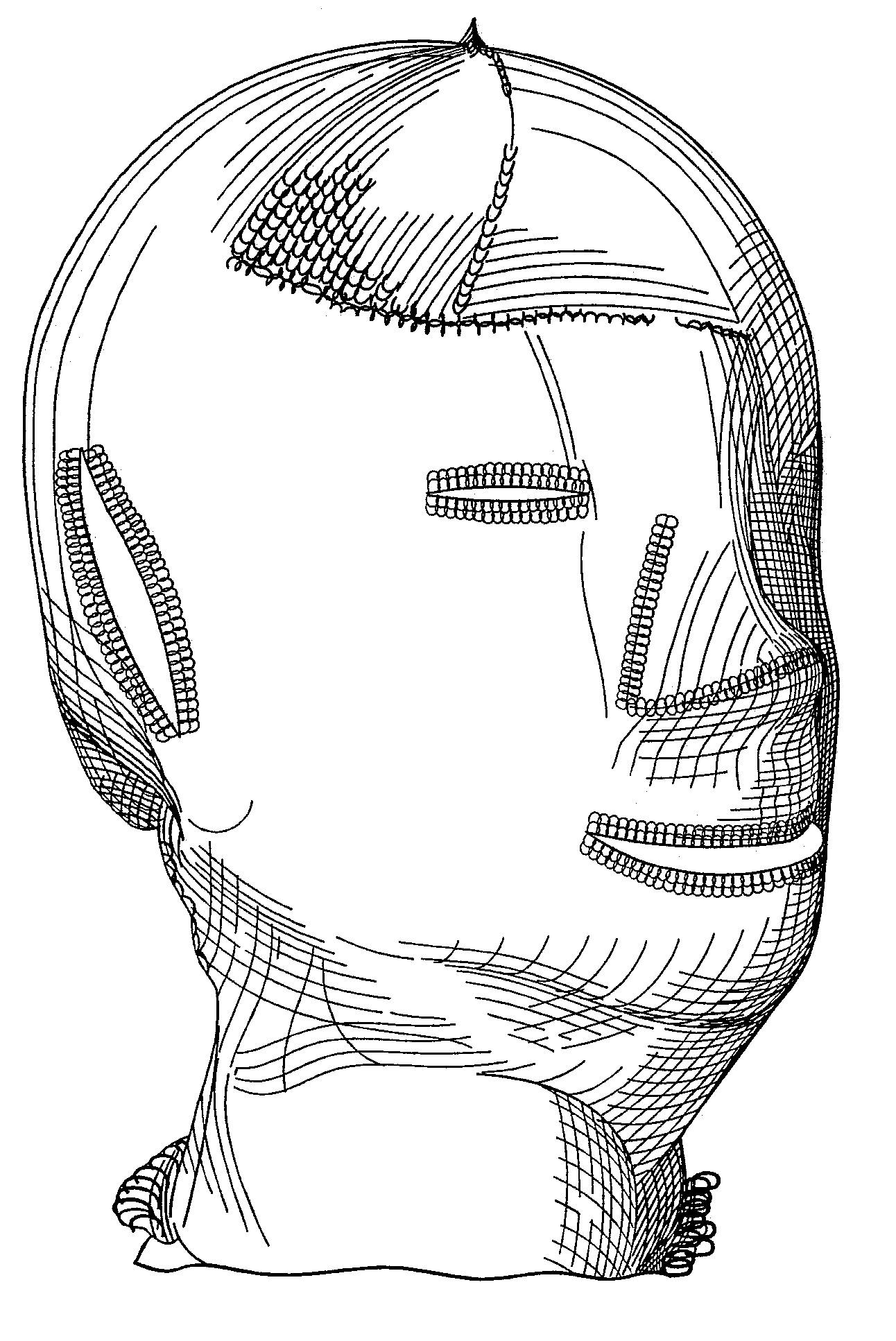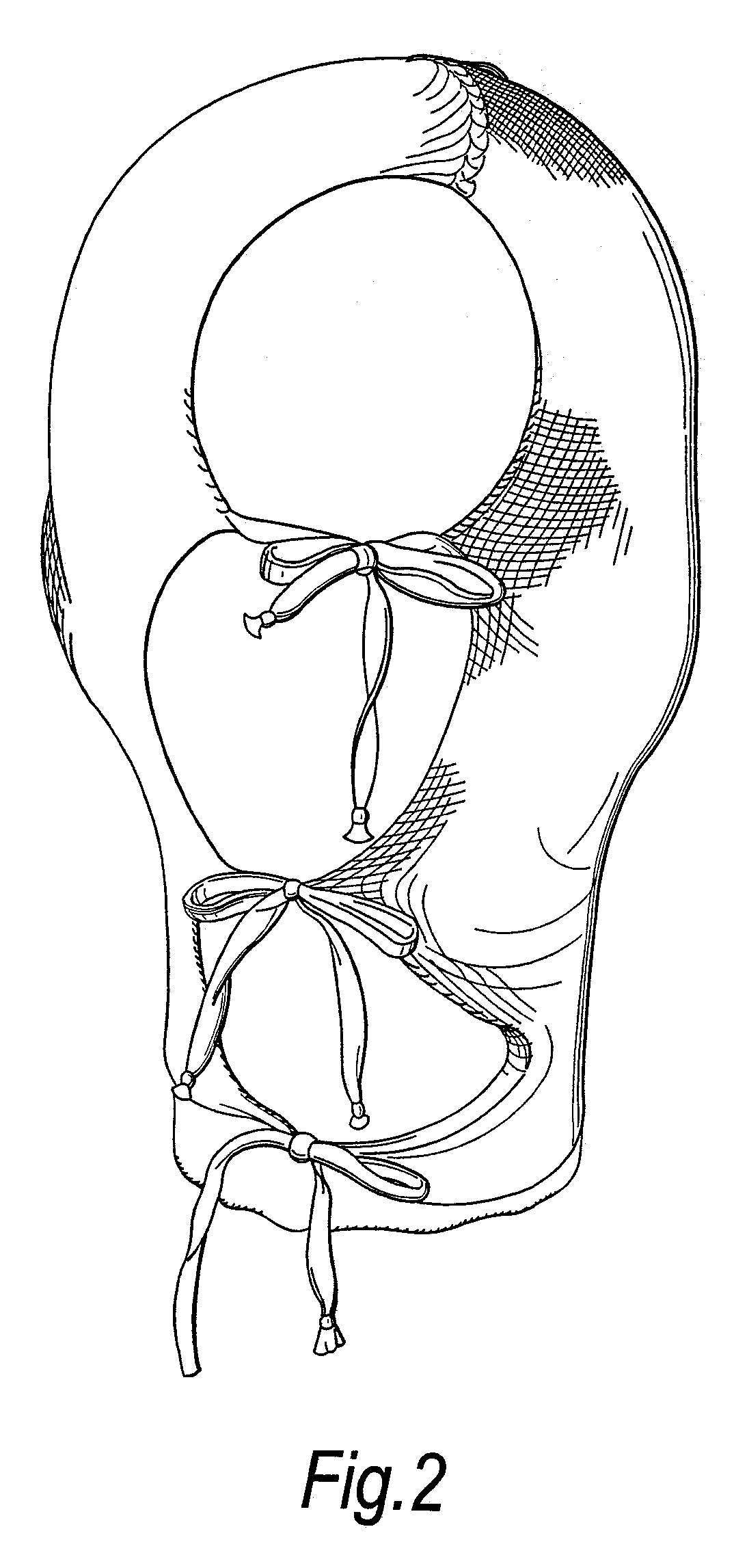Carboxymethylated cellulosic wound dressing garment
a technology of carboxymethylated cellulosic and wound dressing, which is applied in the direction of head bandages, drug compositions, weaving, etc., can solve the problems of difficult mobilization, difficult to create a body-shaped wound dressing from carboxymethylated cellulosic, and not provide an ideal solution to special problems, so as to facilitate intimate contact with the wound and surrounding skin
- Summary
- Abstract
- Description
- Claims
- Application Information
AI Technical Summary
Benefits of technology
Problems solved by technology
Method used
Image
Examples
Embodiment Construction
[0015] Preferably, the wound dressing is comprised of a cellulosic yarn and a textile yarn that is non-cellulosic. This allows the cellulosic yarn to be incorporated in those areas of the garment where absorbency is required, while the non-cellulosic yarn can be incorporated in those areas where absorbency is not required. The non-cellulosic yarn will not be carboxymethylated when the garment is subjected to carboxymethylation and can, for example, be any yarn able to withstand the carboxymethylation process and subsequent gamma irradiation, for instance, nylon, polyolefin, polyamide or lycra. Carboxymethylation is preferably carried out by the method described in WO 03 / 092755.
[0016] Preferably, the knitted garment is comprised of a wound contacting surface knitted from a cellulosic yarn and an outer surface knitted from a textile yarn. In this manner, the garment has an inner surface which gels on contact with exudate and an outer surface which does not gel, but remains as a knitt...
PUM
| Property | Measurement | Unit |
|---|---|---|
| areas | aaaaa | aaaaa |
| tensions | aaaaa | aaaaa |
| time | aaaaa | aaaaa |
Abstract
Description
Claims
Application Information
 Login to View More
Login to View More - R&D
- Intellectual Property
- Life Sciences
- Materials
- Tech Scout
- Unparalleled Data Quality
- Higher Quality Content
- 60% Fewer Hallucinations
Browse by: Latest US Patents, China's latest patents, Technical Efficacy Thesaurus, Application Domain, Technology Topic, Popular Technical Reports.
© 2025 PatSnap. All rights reserved.Legal|Privacy policy|Modern Slavery Act Transparency Statement|Sitemap|About US| Contact US: help@patsnap.com



